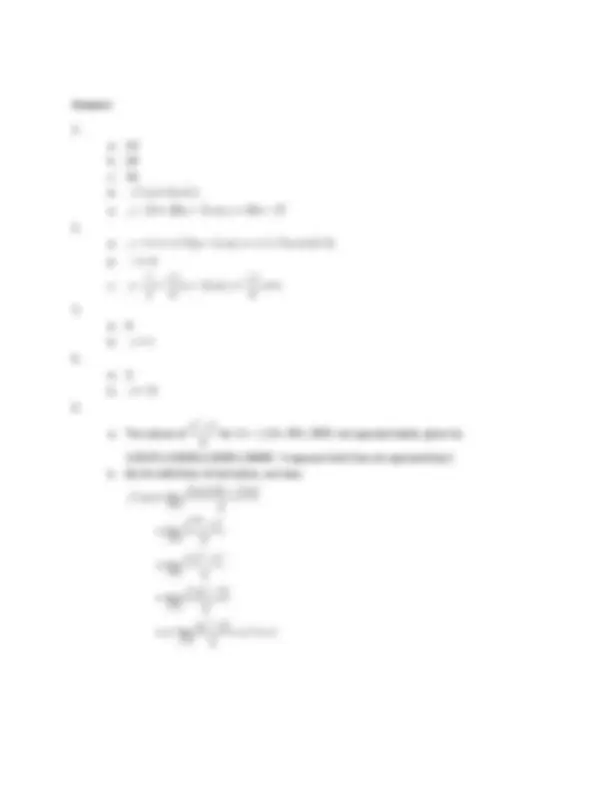



Study with the several resources on Docsity

Earn points by helping other students or get them with a premium plan


Prepare for your exams
Study with the several resources on Docsity

Earn points to download
Earn points by helping other students or get them with a premium plan
Community
Ask the community for help and clear up your study doubts
Discover the best universities in your country according to Docsity users
Free resources
Download our free guides on studying techniques, anxiety management strategies, and thesis advice from Docsity tutors
Solutions to various problems related to derivatives, including finding the average rate of change, instantaneous rate of change, and equations of tangent lines for different functions. It covers topics such as finding the derivative using limits, slope of the curve, and the relationship between trigonometric functions and derivatives.
Typology: Assignments
1 / 2

This page cannot be seen from the preview
Don't miss anything!


a. Find the equation of the secant line between the points
⎛ π ⎞
⎛ π ⎞
h h
a. Use your calculator to compute the value of
h
values appear to be approaching 1.
x
a
h
. (Hint: Recall that one of the basic laws of exponents says that
a h a
Answers 0 14 c.
a. 23 b. 2 c.
a. 0
a. 2
a. The values of
h
1.05171,1.00502,1.0005,1.00005. It appears that they are approaching 1. b. By the definition of derivative, we have 0 0 0 0 0
h a h a h a h a h a h h h a a h
→ + → → → →